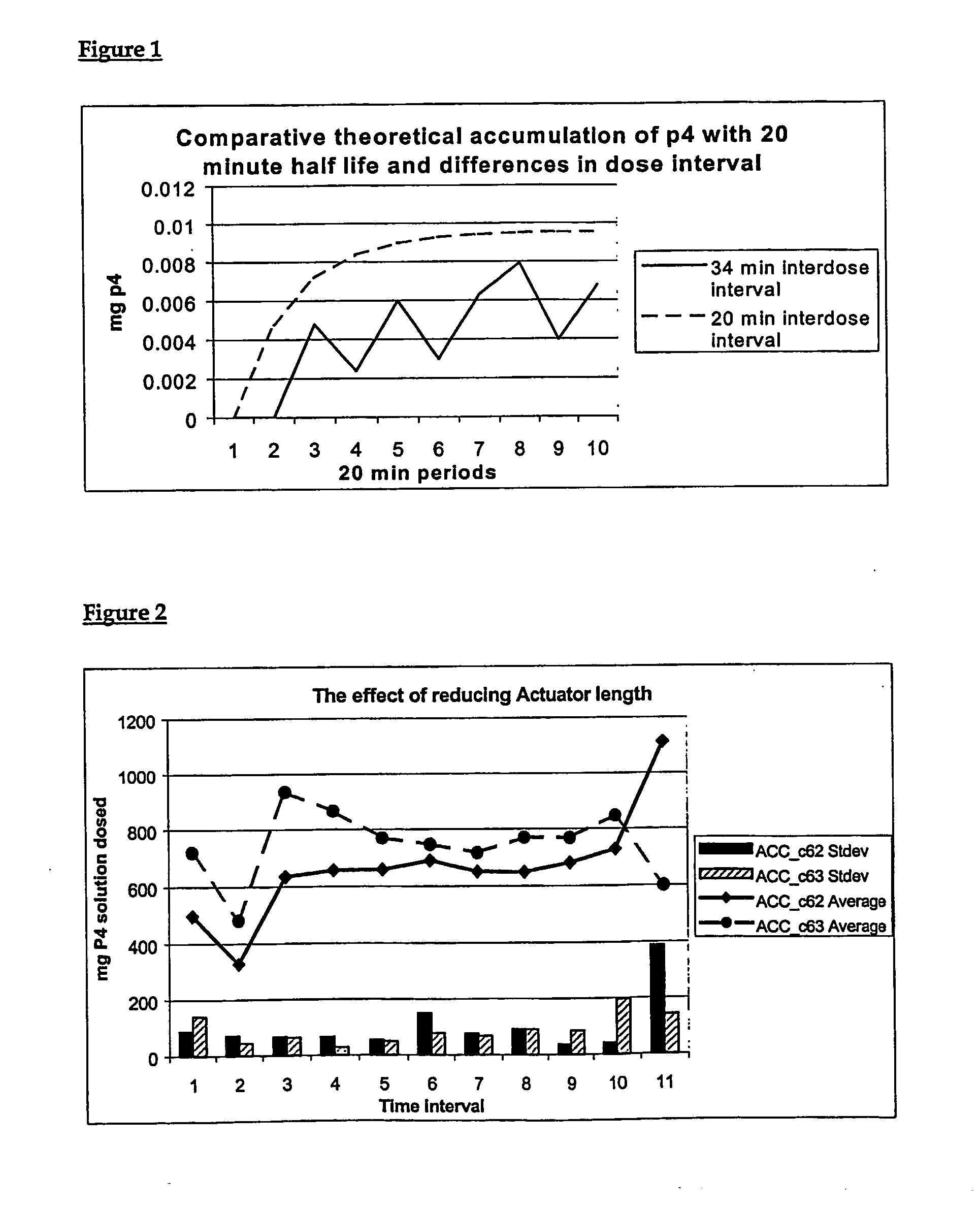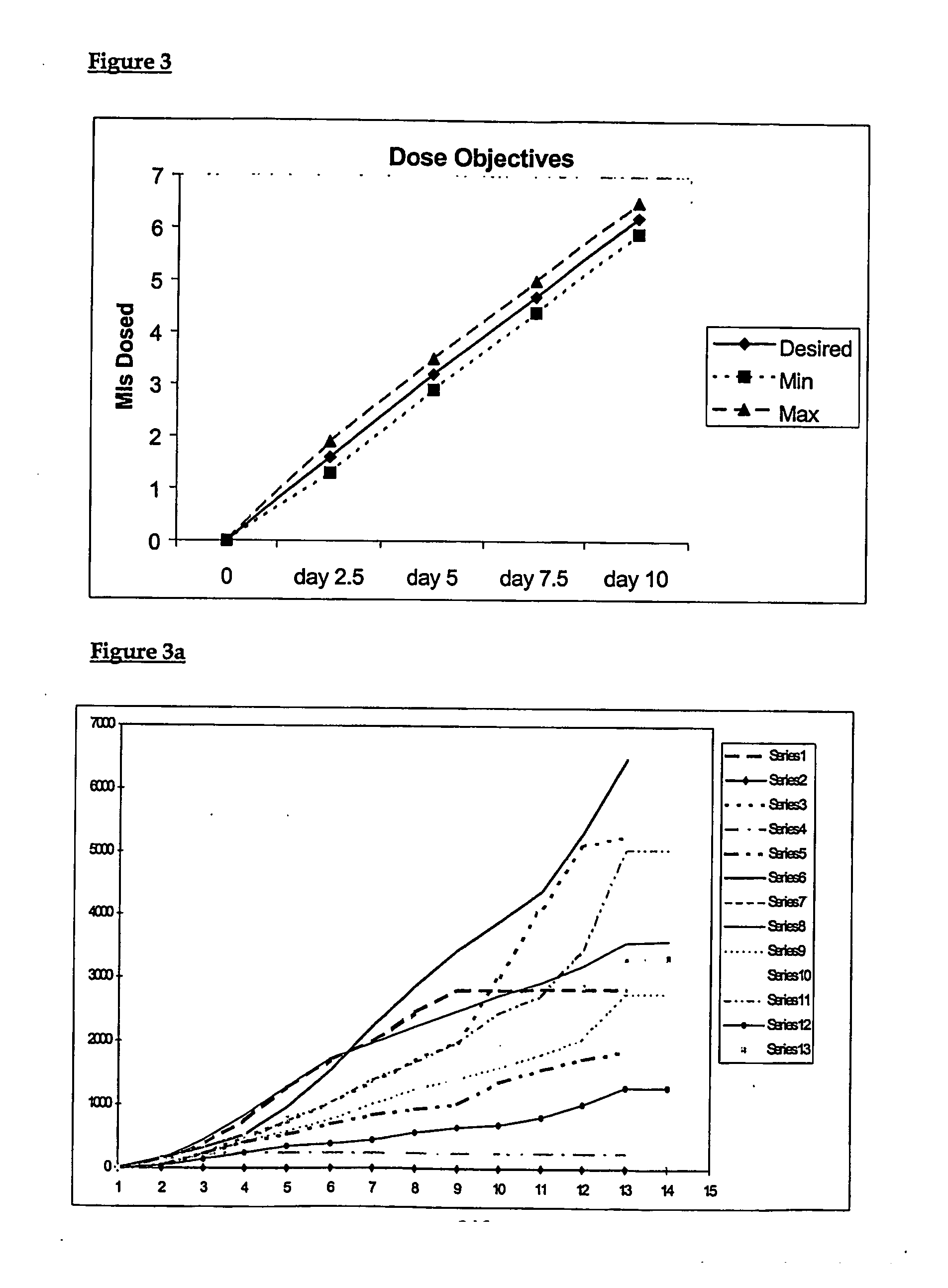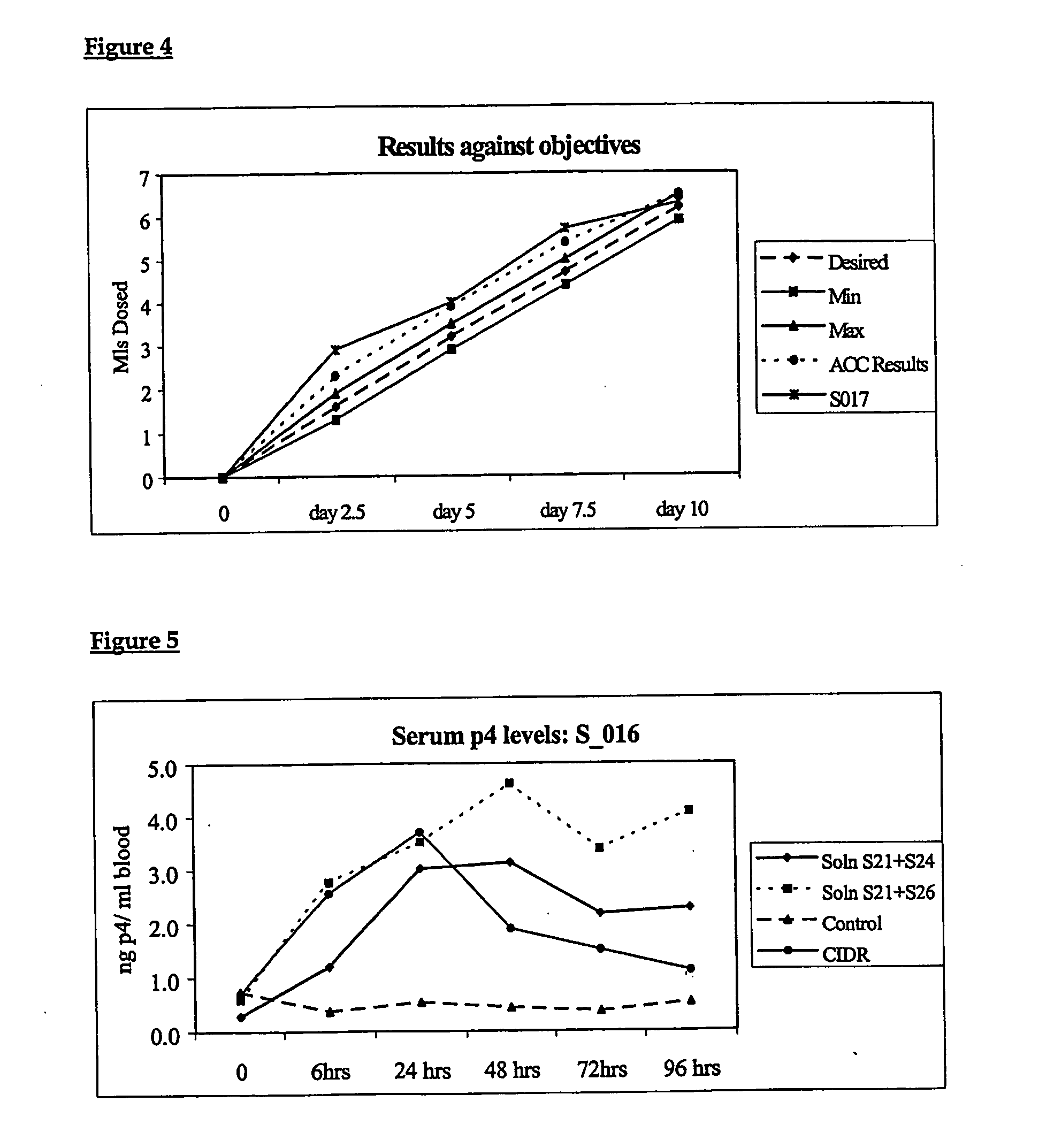Control of a biological function
a biological function and control technology, applied in the field of biological function control, can solve the problems of insufficient one-time insemination, need to improve the permeation of compounds through the vaginal mucosa, and the limitations of the program using two hormones, so as to improve the transfer of progesterone, cost-effective, and favorable results
- Summary
- Abstract
- Description
- Claims
- Application Information
AI Technical Summary
Benefits of technology
Problems solved by technology
Method used
Image
Examples
example 1
The Administering Device
[0212] The formulations of this invention are used with controlled substance delivery devices. In the present example, these are controlled breeding devices used to synchronise the oestrous cycle in cattle for fixed time blanket insemination in either cycling or non-cycling cows. This is achieved by the accurate delivery of a complex hormone regime through a preferred system involving control (preferably electronic computer control) of a unique pumping system.
[0213] The preferred device ensures accurate delivery of 4 different hormonal formulations to the animal at precisely the required dose and at the exact time during an appropriate “x”-day treatment period. For example, a delivery period of 9-days to 11-days may be contained within a total treatment period from 10 days to 12 days, respectively. The length of the treatment periods and the format of the delivery regimes will, at least in part, be dictated by the requirements of the particular species. Dif...
example 2
Preferred Actives
[0224] Reference is made throughout this specification to the use of hormone formulations used to control oestrus in cattle. However, it should be appreciated that an understanding of the concepts of the delivery regime, the single site delivery, the delivery apparatus, the controlled delivery, the method of delivery and actives:carrier ratios can be adapted as required for the use of other preparations / formulations and applications depending on the body process / cycle required to be controlled / synchronised.
[0225] As mentioned previously, in one embodiment described, some if not all of the hormones are preferably dissolved in a solution for efficacy of dosing and to ensure optimum transmucosal transfer. Alternatively, other embodiments may include a one or a combination of the different possible physical forms of the active hormones, which may also be tabletised, be micronised powders, be in gaseous form, or whatever form may be required to effect the desired deliv...
example 3
[0270] The range of possible concentrations of the “hormone actives” in the solutions as a preferred range is discussed below, as is the procedure used to determine the concentration and stability of the respective hormonal solutions used in the formulations (in accordance with one embodiment of the present invention as described with reference to controlling oestrus—particularly in cattle). The procedure for analysing oestradiol and prostaglandin concentration levels uses high-pressure liquid chromatography. The procedure for determining progesterone concentrations uses UV Spectrophotometer according to the British Pharmacopoeia 1993 Standards.
A) Procedure and Calculations for Determining Preferred Concentration of Oestradiol Benzoate, Cloprostenol Sodium, Progesterone in Formulation.
Oestradiol
[0271] The concentration of the oestradiol ingredient is calculated as follows: A graph of standard concentration versus peak area is drawn, which will determine the concentration of oes...
PUM
| Property | Measurement | Unit |
|---|---|---|
| Fraction | aaaaa | aaaaa |
| Fraction | aaaaa | aaaaa |
| Fraction | aaaaa | aaaaa |
Abstract
Description
Claims
Application Information
 Login to View More
Login to View More - R&D
- Intellectual Property
- Life Sciences
- Materials
- Tech Scout
- Unparalleled Data Quality
- Higher Quality Content
- 60% Fewer Hallucinations
Browse by: Latest US Patents, China's latest patents, Technical Efficacy Thesaurus, Application Domain, Technology Topic, Popular Technical Reports.
© 2025 PatSnap. All rights reserved.Legal|Privacy policy|Modern Slavery Act Transparency Statement|Sitemap|About US| Contact US: help@patsnap.com



